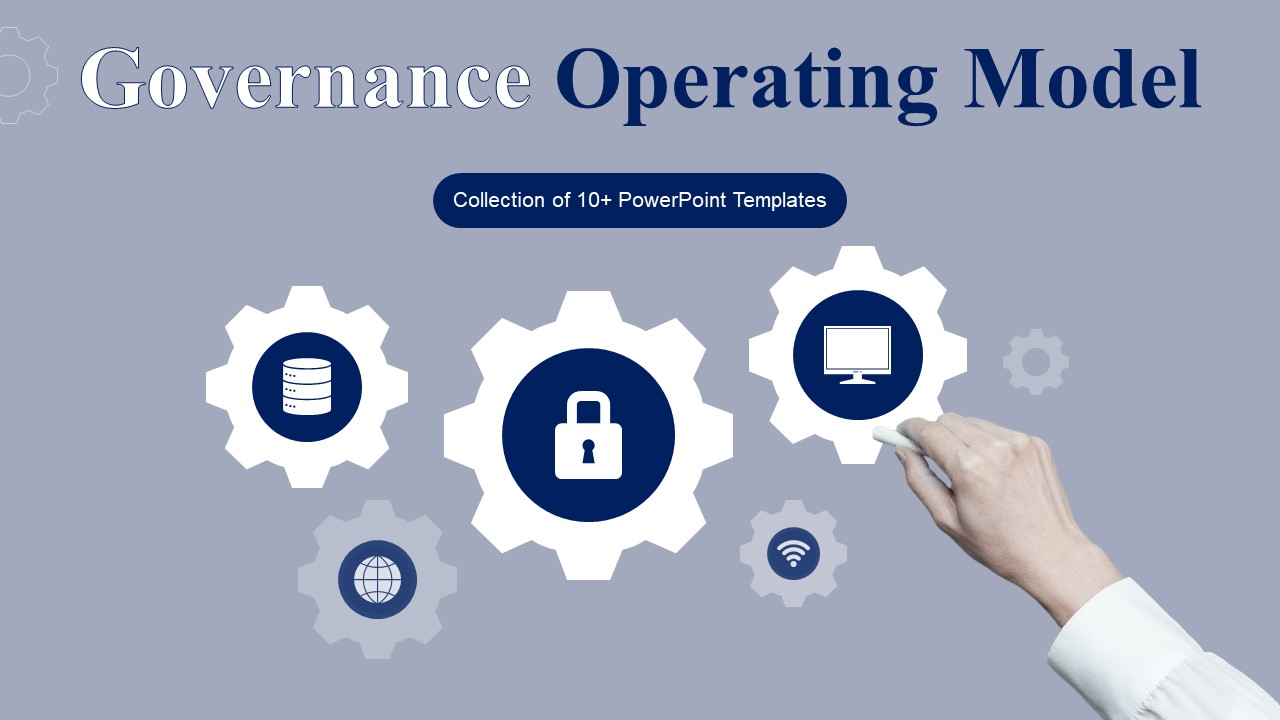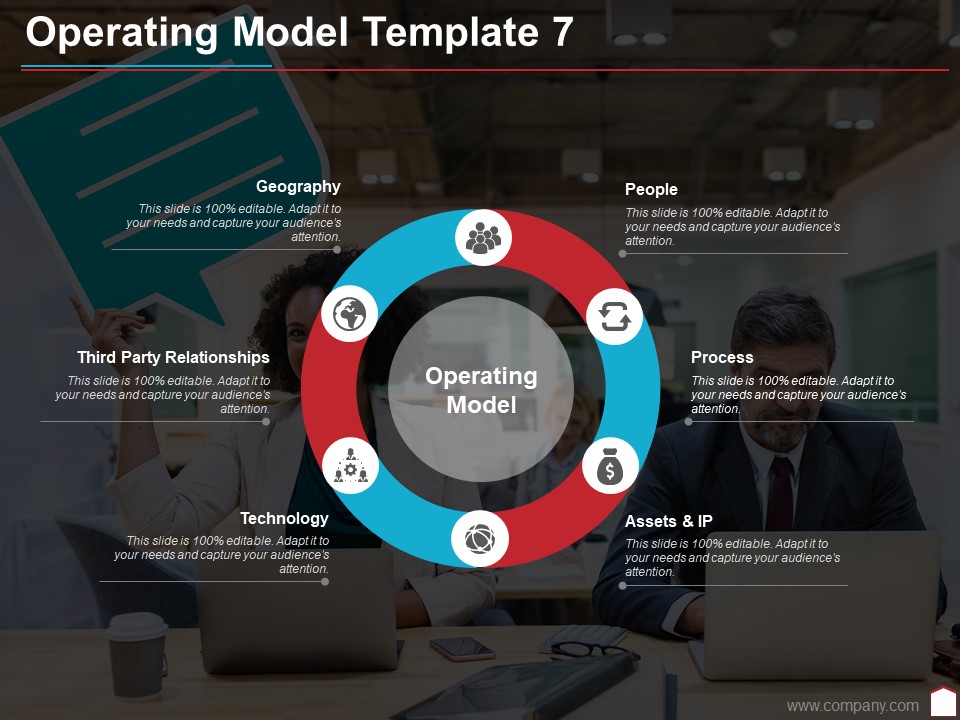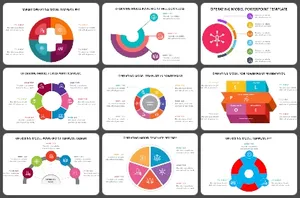JavaScript seems to be disabled in your browser. For the best experience on our site, be sure to turn on Javascript in your browser.
Newly Launched - AI Presentation Maker

Researched by Consultants from Top-Tier Management Companies

AI PPT Maker
Powerpoint Templates
PPT Bundles
Kpi Dashboard
Professional
Business Plans
Swot Analysis
Gantt Chart
Business Proposal
Marketing Plan
Project Management
Business Case
Business Model
Cyber Security
Business PPT
Digital Marketing
Digital Transformation
Human Resources
Product Management
Artificial Intelligence
Company Profile
Acknowledgement PPT
PPT Presentation
Reports Brochures
One Page Pitch
Interview PPT
All Categories

Top 10 Operating Model Templates with Examples and Samples

Nitish Sivaram
In the film The Karate Kid, Jackie Chan's character, initially unassuming and anti-social, has a backstory of knowing kung-fu. When he took Jaden Smith under his wing, the words that resonated at the beginning of training were “jacket on, jacket off.” These words frustrated Jaden until he realized their significance. This principle applies to almost every endeavor: process and getting the basics right will solve any issue a person or an organization might have.
Processes are the foundational stones you lay in the realm where your heart is set. No matter how challenging it may be, you are going to have to take your jacket off and then put it on. Similarly, for people with ideas of creating their business model, knowing what to do is good, but execution and the ‘how’ take the cake. Anybody can get a gym membership, but only a few can build their bodies to their liking. Know your how and any why will be breached. But where do you find the execution map? Look no further; here we are, presenting the top 10 operating model templates to ease your worries. Dive in now and download it in a bit!
Template 1: Governance Operating Model
This PPT bundle is a tool that helps to translate government policies and frameworks into practice and responsibilities. This PPT layout consists of every governing body’s operating model which could be used to showcase an organization's operating model. It has a target operating model from banks to a cyber security risk business model, it has every base covered to provide the best options for the Governance Operating Model. All of our slides are easily editable and accessible, and using these in your templates wouldn't be a tough job. Download now!

Template 2: Data Governance Operating Model
This PPT template is yet another data governance operating model that encapsulates most of the governing sector’s business model. This template is quite different from the previous one as it has slides that underscore its importance and present a diverse explanation of the challenges and solutions of a Data Governance Operating Model. It is indispensable to have a roadmap before beginning any journey, and when it comes to businesses and government-owned sectors, we must notice that the volume with which we are dealing is immense, and structure is certainly non-negotiable. The icing on the cake of this template is its performance metrics slide which includes its data and numbers that provide a wider view. Download this now!

Template 3: Why Team Operating Model is Required?
The importance of a structure-based operating model cannot be overstated. It is akin to running a well-oiled machinery that would continue to run even without somebody overlooking it. A good business model requires a proper operating model which would provide the navigation. This PPT bundle explains the same. This template explains the requirements of an operating model canvas. Remember, from Michael Jordan to Kobe Bryant, they all needed players around them to be recognized as one of the greatest of our time. Teams are built on morals, cohesiveness, cognizance, and, finally the drive towards the same goal. Build your team now with our team operating model template. Download now!

Template 4: Target Organization Operating Model with Culture and Leadership
This PPT template pictorially represents a pyramid that describes the target operating mode with a hierarchy and culture segment. On top, it represents the organization’s vision and strategy, and as it goes down, it touches on the target operating model, hierarchy, and, lastly, the people who would involved in the business model. This vast explanation of the organization’s target model involving the culture that had been put in place which provides a path to providence. Download this strategic blueprint which will help your organization function without any obstacles and hindrances.

Template 5: Cloud-Enabled Workforce and Operating Model
A cloud-enabled workforce is the integration of cloud computing which amplifies employee efficiency and also the workforce that utilizes the technology. This PPT bundle or template is the template for building a strong workforce that can utilize it most efficiently. Technology is the way forward and this operating model can help organizations transform the way it functions and can increase working opportunities for individuals and go beyond boundaries. When integrated correctly into any operating model, cloud-enabled workforces reportedly bring in more results and leads as working from the comfort of their houses brings out the best in them. Download this template.

Template 6: Target Operating Model Functions
This PPT template is centered around the functions of an Organization’s target operating model. The functions or rather the processes involved are the ones that are also in the Target Operating Model, Enterprise Architecture, and finally the Business Model. The Target Operation Model Functions are at the forefront of development and they define the optimal structure of an organization to accomplish strategic goals efficiently. This blueprint signifies the steps and functions. We are handing out blueprints and roadmaps that could take you places if it is assimilated properly. Download this blueprint to streamline your organization’s growth now!

Template 7: Target operating model governance people process
This PPT template covers the 4 key elements of an operating model. The 4 operating models are people, process, governance, and technology. Each of them holds its significance in making a well-structured operating model. In this target operating model, governance guarantees the organization's compliance and standardized decision-making, and people and processes guarantee the right skills and effective processes to improve the organization's performance. Flows make work easier and smoother by reducing the time taken and increasing uniformity in the organization.

Template 8: People Process with Technology Operating Model
Dogs are no longer a man’s best friend. Technology has replaced them. People process with technology is the framework that integrates people and technology to streamline organizational goals. People, processes, and technology are the holy trinity that bounds organizations with success. Once a structure is put into place it's up to the people within the organization to integrate it and put them into their processes that would bound to results. Download this template now to make the best use of technology and it into your operating model canvas.

Template 9: Operating Model Template 3
This operating model canvas spotlights the operating model principles pretty uniquely and succinctly. This is a one-slide template that places people above operations, which means that anything from technology to workforce management is in the hands of individuals who can potentially oversee those. This sophisticated template includes Multi-Channel, Quality Monitoring, Workforce Management, Customer Feedback, and lastly, Reporting. Hiring the right people at a job is as important as hiring people for the right job. As they say, you cannot judge the potential of a fish with its ability to climb a tree. Hire the right people and place them right. Download this Operating Model template now!

Template 10: Operating Model Template 7
The final operating model template demonstrates a six-stage process. Each operating model is unique in its features, but this one stands out as being straightforward. This business model starts with geography and moves on to people, processes, assets, technologies, and finally, third-party relationships. These six stages consolidate the three key elements of running or creating a proper operating model, people, process. and technology. If the first two are placed right and the third one is utilized judiciously, growth becomes a cheat code. Remember, an organized man is never late to a party. Download this now!

What factors made the Scarecrow a successful business leader? Because he was outstanding in his field! As the scarecrow realized, it is possible to stand out from the crowd if you have the right operating model template as a business. As we have seen in this blog, these are the key components of an effective operating model and its advantages. Whether it's about redesigning, getting people on board, or implementing tools, it is vital to have a clear plan. The ten operating model templates that we have outlined above will help you navigate through the challenges of implementation, not only outlining what needs to be done but also how it can be done effectively. These templates are meant to reduce the amount of stress involved in creating a plan and provide guidance for achieving strategic objectives. That is why I want to assure you that uncertainty should not be the reason to give up on success. Take these templates, adapt them, and see how your organization can benefit. Download now and join the millions of users who have transformed their operations for the better!
Related posts:
- How to Design the Perfect Service Launch Presentation [Custom Launch Deck Included]
- Quarterly Business Review Presentation: All the Essential Slides You Need in Your Deck
- [Updated 2023] How to Design The Perfect Product Launch Presentation [Best Templates Included]
- 99% of the Pitches Fail! Find Out What Makes Any Startup a Success
Liked this blog? Please recommend us

Top 10 Quality Control Templates with Examples and Samples

Top Ten 30-Day Calendar Templates with Samples And Examples
This form is protected by reCAPTCHA - the Google Privacy Policy and Terms of Service apply.

--> Digital revolution powerpoint presentation slides

--> Sales funnel results presentation layouts

--> 3d men joinning circular jigsaw puzzles ppt graphics icons

--> Business Strategic Planning Template For Organizations Powerpoint Presentation Slides

--> Future plan powerpoint template slide

--> Project Management Team Powerpoint Presentation Slides

--> Brand marketing powerpoint presentation slides

--> Launching a new service powerpoint presentation with slides go to market

--> Agenda powerpoint slide show

--> Four key metrics donut chart with percentage

--> Engineering and technology ppt inspiration example introduction continuous process improvement

--> Meet our team representing in circular format

- Collections
- Project management
- Operating model
Free Operating Model Presentation Templates
Free operating model powerpoint templates and google slides themes: make your business operations shine our free, easy-to-edit templates explain your processes with stunning visuals and simple layouts. impress anyone, boost understanding, and leave a lasting impact. no design headaches, just download, edit, and present get your free templates now.

- Royalty-free: Use them as your own, and customize them with own your content.
- 100% editable: Tweak colors, fonts, and content to match your brand.
- Multiple formats: Choose between 4:3 or 16:9, portrait or landscape – whatever fits your needs.
- Free slides available: Try before you buy! Download a selection of free slides to see the quality.
We're here to help you!
What is an operating model.
An operating model is like a blueprint that explains how your organization works. It includes your functions, processes, software and hardware, equipment and physical structure, people capacity, and capabilities. It is vital for the success of an organization.
What are Operating Model PowerPoint Templates?
This template is a graphical illustration of your organization's operating model. It can help you make a business presentation to deliver the data management framework.
Where can we use these Operating Model Slides?
Every business and organization can use these slides to make professional presentations to visualize their operating model.
How can I make Operating Model Slides in a presentation?
You can easily make these slides using pre-designed templates available online. You can also check out our tips and tricks pages to learn the steps to design slides from scratch.
Who can use Operating Model PPT Templates?
Managers often use these PPT templates to comprehend how changes in one department can affect other parts of the business.
Why do we need Operating Model PowerPoint Slides?
These slides can help you present how your company is operating now and how it will manage business operations in the future. It provides a clear layout for data management.
Where can I find Free Operating Model PPT Templates?
Finding free templates is simple by browsing the internet. Whereas it is now even simpler with Slide Egg, where you can get a collection of free PPT templates with the highest quality.

IMAGES